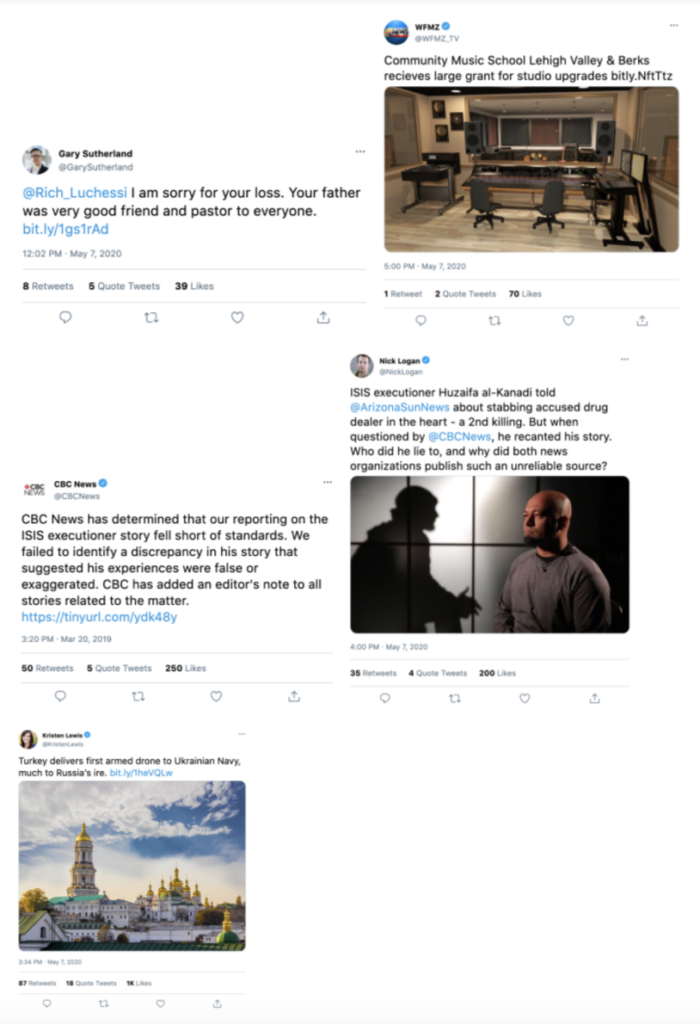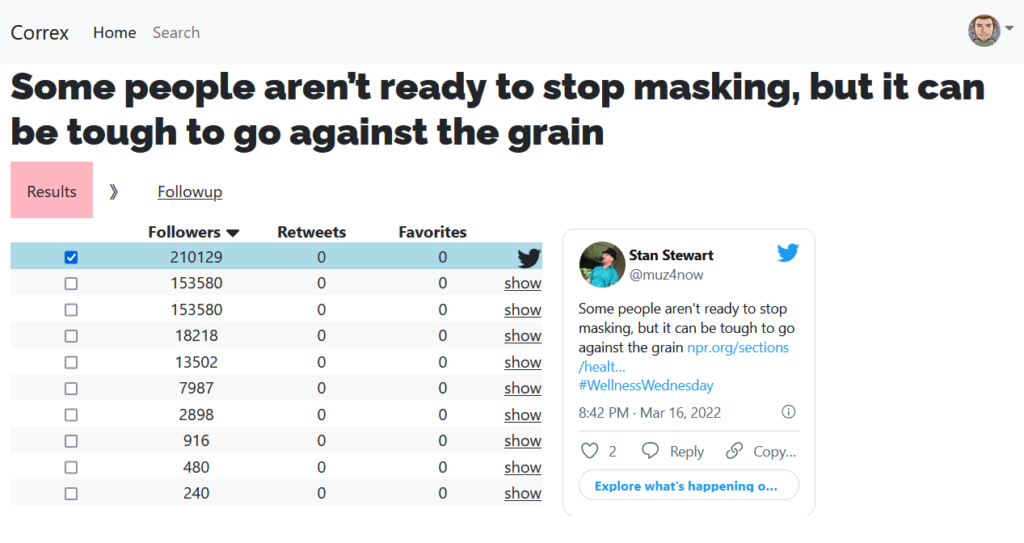The Corrections Dilemma: increased accuracy, decreased trust
We have some good news for journalists who want to ensure that the public has the best and most accurate information. Corrections work. When you correct your errors, the people who see the corrections have a more accurate understanding of what you’ve reported.
We also have some bad news. After people see your corrections, new research shows, they have less trust in your reporting.
The News Co/Lab partnered with colleagues at Dartmouth College to gauge the effectiveness of journalistic corrections and their effect on audience trust. Our research team, led by Brendan Nyhan, a professor of government at Dartmouth, surveyed 2,862 people for a paper, “The Corrections Dilemma: Media Retractions Increase Belief Accuracy But Decrease Trust,” in the Journal of Experimental Political Science.

This sample, simulated newsfeed, which was not visible to the public, featured the news outlet retraction before third-party questioning.
In the study, participants first read a simulated Twitter newsfeed that included a false tweet attributed to the Canadian Broadcasting Corporation (CBC) as well as filler tweets constructed for the study. The false tweet reported that a Canadian citizen had become an ISIS executioner. (This claim was originally made by the individual who was the source for the New York Times’ “Caliphate” podcast; we chose to use the CBC, which covered the earlier claim, as the Twitter source in the study rather than the Times due to concerns about how pre-existing attitudes about the Times would affect people’s responses.)
Participants then viewed a second simulated Twitter newsfeed that randomly included a correction to the original tweet from the CBC itself; a correction from a third party questioning the story; both corrections; or neither correction (the control group). (The correction tweets were adapted from original tweets responding to the “Caliphate” podcast.)
Afterwards, participants who received a correction were more likely to express accurate beliefs about the false claim in the original tweet — that is, they were less likely to believe the claim that a Canadian had become an ISIS executioner. Notably, the people informed of the error by the CBC itself had a better understanding of the actual facts than if they’d seen a correction posted by a third party.
No matter who posted the correction, however, survey participants were less likely afterward to say they trusted the news outlet’s reporting.
I fear that some journalists will read this as an invitation to forego corrections. Not only is that ethically suspect, it’s counterproductive, since someone else is bound to notice the error and tell the world, usually with the help of other media critics. Again, as noted, the study found that corrections made by third parties were less successful in updating people’s knowledge.
“Letting others point out the error (via a third party correction) has similarly negative consequences for trust but is less helpful on belief accuracy,” Nyhan says. “In other words, you’re going to take the hit anyway, but the audience will be less well-informed if you don’t admit error yourself.”
The research results came as a disappointing surprise to me. They contradicted my longstanding hypothesis that corrections — a crucial element of journalistic transparency — would (as I wrote in my 2010 book, Mediactive) lead audiences to “believe you less but trust you more.” Oops.
I’ll try another hypothesis here: What if we do corrections even better while doing our absolute best to forego the need for them in the first place? If corrections are exceedingly rare because we make exceedingly few errors, and if we handle the necessary ones even more earnestly, maybe that combination will help boost trust over time.
We do know, from research, that journalistic transparency in the broad sense can help improve audience trust. If we issue forthright and timely corrections in the context of a timely and systematic effort to show audiences who we are, what we do, how we do it, and why we do it — and make all of this a more visible part of our output — perhaps the corrections will become one element of a campaign that leads to earned credibility.
But only, we suspect, if the corrections become even more transparent themselves. How? First, explain what happened in painful (for the journalist, if not the audience member) detail. Second, invite audiences directly into the corrections process by giving them the tools they need to let journalists know when an error needs fixing. At the moment, journalism doesn’t do much of either.
Here’s an example of what was plainly a painful correction by a reporter I admire, Radley Balko. He did what turned out to be a credulous interview with a right-wing activist a few years ago, and the interviewee —who turned out to be a leader in the violent attack on our Capitol a year ago — took advantage of Balko’s journalistic good will. Balko explained it at length in “A big honking mea culpa” that has only boosted my trust for his work.
Would more robust corrections from news organizations be helpful in adding credibility? Again, I’d hope the answer is yes, but we need research to find out.
The timeliness of corrections, or often the lack thereof, has always been an issue in the craft. In the days of print newspapers, corrections tended to appear, if at all, on Page 2 some days later with little or no context to help people know what the initial story was about in the first place. Online journalism has not only made timely corrections possible, it has given us ways to effectively directly reach people who saw and/or shared the original mistakes.

That’s the thinking behind a News Co/Lab project called “Correx,” an online tool that leverages social media to get updated information to prolific sharers of news, in hopes that they’ll reshare the correction as well as the initial story. The idea is to send corrections down the same social pathways over which the original mistakes traveled in the first place, thereby adding timely and in-context information that will reduce (we hope) the damage from the goof. (If your newsroom is interested in trying out Correx, please get in touch and we’ll give you access.)
None of the above goes to the issue of reducing the need for corrections by reducing the errors, which is easy to advocate for and not so easy to make happen. Journalism is a craft done by fallible human beings, on deadline, in a clickbait-fueled media economy.
It’s my impression that nonprofit newsrooms make fewer errors than for-profit newsrooms. (I don’t know of any research on this point.) Maybe, assuming I’m right, that’s not a coincidence.
Bottom line: Journalists should want, more than anything, for their audiences to be correctly informed. If posting corrections means a hit to their credibility in the short-term, that is a risk they should be willing to take to make.
Dan Gillmor is a longtime participant in new media and digital media literacy. He’s author of the 2009 book, Mediactive, discussing media literacy in the digital age from a journalist’s perspective.
